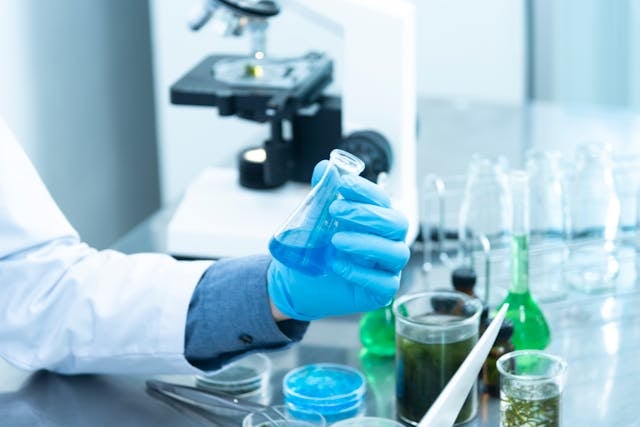
Industrial microbiology is one of the most promising areas of microbiology. One of the frontier techniques that is helping this discipline evolve is whole plasmid sequencing. The current blog describes what whole plasmid sequencing is, how it works, and finds its significant contribution to industrial microbiology. Let’s go through it!
Here is how sequencing is done;
- Sample Preparation: The first step is to isolate the plasmid DNA from bacterial cells. This can involve disrupting the cells and isolating the plasmid DNA.
- Sequencing: The isolated plasmid DNA is then sequenced with the help of modern technologies like Illumina, PacBio, or Oxford Nanopore. These technologies used to sequence the nucleotide for the plasmid DNA, providing raw data as the outcome.
- Data analysis: The raw sequence data is compiled into one complete plasmid sequence by bioinformatics tools, which include error correction, alignment of sequences, and gene annotation to understand the functions of genes.
- Annotation: The last step of the plasmid is to be annotated to locate any genes, regulatory regions, and other vital features. Such features can be helpful in a variety of applications within industrial microbiology.
Applications in Industrial Microbiology
The full plasmid sequencing had some innovations in microbiology:
Optimization of Microbial Strains
- Enhanced Production: Plasmid sequencing enables researchers to determine the genes responsible for the encoding of enzymes, antibiotics, or any valuable compounds, thus allowing them to modify microbial strains further and optimize them to enhance the yield of this product.
- Strain improvement: Sequencing helps understand the genetic basis of desirable traits, enabling superior strains to be engineered through genetic modification.
Bioremediation
- Pollutant Degradation: Most plasmids enable bacteria to degrade, and they can be sequenced to identify the bacterial strains that can be applied in cleaning up.
- Pathway Engineering: It allows comprehension of the genetic pathways implicated in pollutant degradation, which empowers engineers to make bacteria target specific synthetic pollutants much more effectively.
Antibiotics Production
- Discovery of new antibiotics: Through whole plasmid sequencing, novel antibiotic resistance genes could be detected, which might reflect the detection of new antibiotics.
- Production Process Optimization: Genetic knowledge responsible for antibiotic synthesis can be used to optimize industrial processes to increase yields and decrease costs.
Future Perspectives
The future of complete plasmid sequencing in industrial microbiology seems very attractive: it has to become faster, cheaper, and even more accurate with progressing sequencing technologies and bioinformatics. This will further underpin the harnessing of microorganisms for sustainable and efficient production processes within the industry.
The whole plasmid sequencing technologies now unlock new genetic secrets of plasmids for scientists to further work on optimizing microbial strains towards fast commercialization in producing a wide range of products such as biofuels, antibiotics, pollution cleanup, and industrial enzyme manufacturing. Advances in technology have resulted in a potentially immense possibility for whole plasmid sequencing to drive innovation in industrial microbiology. Understanding and elaborating on this genetic information encoded in plasmids will open up expanding avenues in biotechnology, leading the world to a brighter and more sustainable future.
Interesting Related Article: “How Does Biotechnology Heal The World?“








